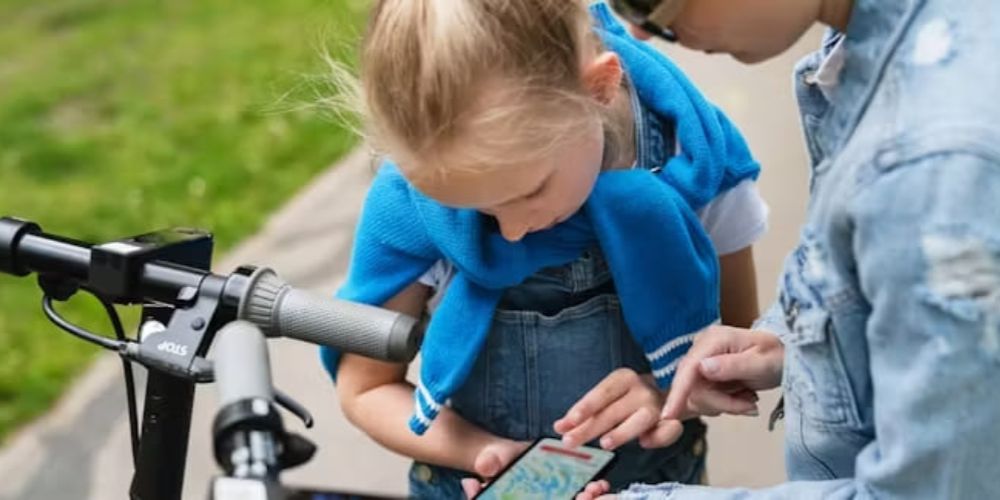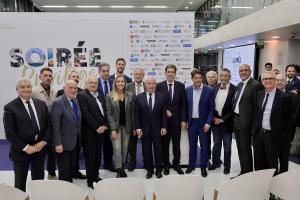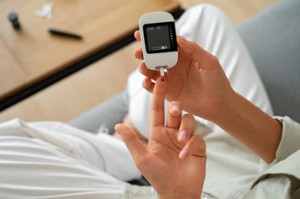You've planned a family holiday and everything's ready to go. You turn on your phone to launch your favorite GPS application, but to your amazement, nothing happens... You try again by launching another application or changing phone, but still nothing. You'll have to make do without it.
After all, it shouldn't be that difficult, it's the same route every year; to get to the freeway, it's on the left as you leave the block. Or maybe you'd rather turn right, first onto the main road and then back onto the freeway in the right direction?
In the end, it's not a foregone conclusion... and you'll have to wait for the GPS to return or for you to find that old paper map you've lost (too) somewhere at home. While you're looking for the road map, you might be wondering how we got around before GPS.
Has this technology caused us to lose our sense of direction?
What is "spatial navigation"?
Please note that we're not talking about rockets or astronauts when we talk about "space navigation". The term simply refers to all the processes that enable us to orientate ourselves and move around our environment.
Navigation capabilities are based both on the integration of our own movements in the environment and on the continuous calculation of our position. It's this ability that enables you to orientate yourself easily in the dark or with your eyes closed, without the risk of confusing the dining room with the toilet when travelling at night, for example.
But the further you travel, the less accurate you become, and the more lost you become. To help us stay on course, we also use special external landmarks in the world around us, such as a monument or a mountain. By combining these two sources of spatial information, we are able to create a detailed mental map of our environment.
Creating this type of relatively complex mental map is not the only possible strategy. for example, "left, out" (towards the freeway), "then straight ahead" and "your destination will be 200m on your right". This is very similar to digital GPS tools... but with no risk of disconnection... a very practical on-board navigation system!
Child's play in spatial orientation?
From the very first months of life, newborn babies show astonishing ability to find their way in space. Contrary to what we might have thought a few decades ago, these tiny creatures do not see the world solely from their own point of view and, from 6 to 9 months, they are able to use familiar visual cues to adjust their orientation, especially in familiar environments.
By 5 months, they can perceive changes in an object's position, and by 18 months, they can partially memorize precise locations. Around 21 months, they begin to combine information from their own movements with external cues to find a precise position in space.
Motor experience seems to play a key role here: the longer young children have been walking, the more their spatial skills progress. As development progresses, spatial skills become increasingly refined. By age 3, they're still making perspective errors, but by 4 or 5, they're beginning to understand what another person elsewhere in space is seeing.
Between the ages of 6 and 10, children become able to combine different types of external information, such as distance and orientation, to locate themselves in space. By the age of 10, their spatial performance is already approaching that of adults.
The development of these abilities relies in particular on the maturation of a brain region known as the retrosplenial complex (RSC). This area is involved in distinguishing specific locations (such as a store near a lake or a mountain), which forms the basis of landmark-based spatial navigation.
Recent results show that this ability to construct mental maps is already partly present by the age of 5. But if this sense of orientation develops so early and is so reliable, why do we need GPS to orient ourselves?
GPS, ally or enemy of our sense of direction?
If it's easy to find your way in familiar places, GPS quickly becomes an indispensable ally as soon as you get off the beaten track. However, its systematic use could tend to alter the way we find our way in space in general. A number of studies suggest that intensive GPS users find their way less well in new environments, and develop less precise knowledge of the places they visit.
A recent meta-analysis seems to confirm a negative link between GPS use, knowledge of the environment and sense of orientation. However, some of the results qualify this finding: the deleterious effects seem to be linked above all to passive use. When the user remains cognitively active (trying to memorize or anticipate routes), the impact on navigation skills is less, or even non-existent.
So, GPS is not in itself detrimental to our navigation skills. Rather, it's the way we use it that determines whether it has a positive, negative or neutral influence on our spatial navigation skills.
So, the good news is that even if you haven't managed to find your road map, you've got your hands on your old stand-alone GPS, the one that never left your head! And, even if the destination is now programmed and all you have to do is follow the marked path, consider looking up to contemplate the landscape from time to time; by engraving a few landmarks to memorize, you could enjoy the journey and learn to navigate again.![]()
Clément Naveilhan, PhD student in Human Movement Sciences at LAMHESS (Université Côte d'Azur)and Stephen Ramanoel, Senior Lecturer in Psychology, Cognitive Neuroscience and Human Movement Sciences, researcher at LAMHESS (Université Côte d'Azur).
This article is republished from The Conversation under Creative Commons license. Read theoriginal article.
THE CONVERSATION
Université Côte d'Azur, through its Science et Société department, joined "The Conversation" online news media in January 2022. The aim is to showcase the work of our research teams in the service of informed, reliable information that contributes to civic debate.
The Conversation is an online medium and a non-profit association. Its model of collaboration between experts and journalists is unique: to share knowledge, making the voice of researchers heard in civic debate, and enlightening the news with reliable, research-based expertise.
theconversation.com
SUBSCRIBE NOW!
To keep up with The Conversation experts on a daily basis, subscribe to our newsletter.
theconversation.com/en/new




